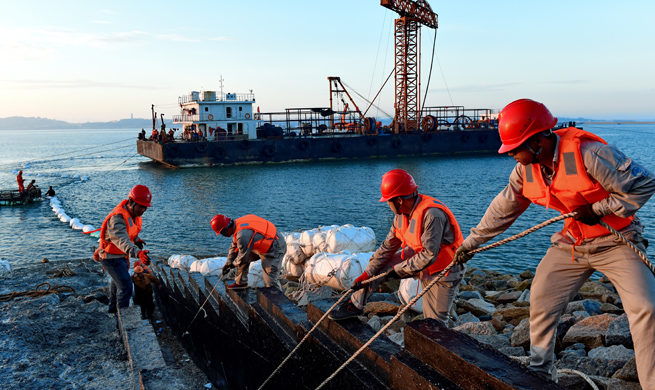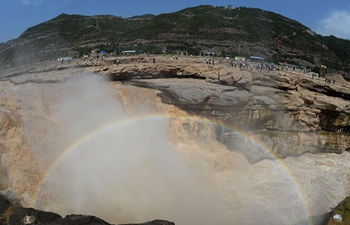SAN FRANCISCO, July 12 (Xinhua) -- A one-trillion-ton iceberg, one of the biggest ever recorded, has calved away from a part of the Larsen Ice Shelf, a long ice shelf in the northwest part of the Weddell Sea, extending along the east coast of the Antarctic Peninsula, in Antarctica.
The calving, which was revealed Wednesday by Project MIDAS, an Antarctic research project based in the United Kingdom, occurred sometime between Monday and Wednesday this week, when a 5,800-square-kilometer section of Larsen C finally broke away.
The iceberg, which is likely to be named A68, weighs more than a trillion metric tons, wrote Martin O'Leary and Adrian Luckman, both researchers at Swansea University, the U.K., in a web posting.
Its volume is twice that of Lake Erie, the fourth-largest lake of the five Great Lakes in North America, and the thirteenth-largest globally if measured in terms of surface area.
The final breakaway was detected in data from a satellite instrument of the U.S. National Aeronautics and Space Administration (NASA), which images in the thermal infrared at a resolution of 1 kilometer, and confirmed by another instrument.
The iceberg was already floating before it calved away, so it has no immediate impact on sea level. The calving of this iceberg leaves the Larsen C Ice Shelf reduced in area by more than 12 percent, and the landscape of the Antarctic Peninsula changed forever.
The Larsen Ice Shelf is a series of shelves along the east coast of the Antarctic Peninsula. From north to south, the segments are called Larsen A, Larsen B, Larsen C, then D, E, F and G by researchers who work in the area. While Larsen A is the smallest and Larsen C the largest, the ice shelf's breakup since the mid 1990s, including the collapse of Larsen A in 1995 and Larsen B in 2002, has been widely reported.
With a thickness of between 200 and 600 meters, the Larsen C floats at the edge of the Antarctic Peninsula, holding back the flow of glaciers that feed into it.
"We have been anticipating this event for months, and have been surprised how long it took for the rift to break through the final few kilometers of ice," said Luckman, lead investigator of the MIDAS project. "We will continue to monitor both the impact of this calving event on the Larsen C Ice Shelf, and the fate of this huge iceberg."
While the remaining ice shelf will continue naturally to regrow, previous research has shown that the new configuration is potentially less stable than it was prior to the rift. Researchers believe that there is a risk that Larsen C may eventually follow the example of Larsen B, which disintegrated in 2002 following a similar rift-induced calving event in 1995.
"We're going to be watching very carefully for signs that the rest of the shelf is becoming unstable," O'Leary, a member of the MIDAS project team, wrote in the web posting.

















